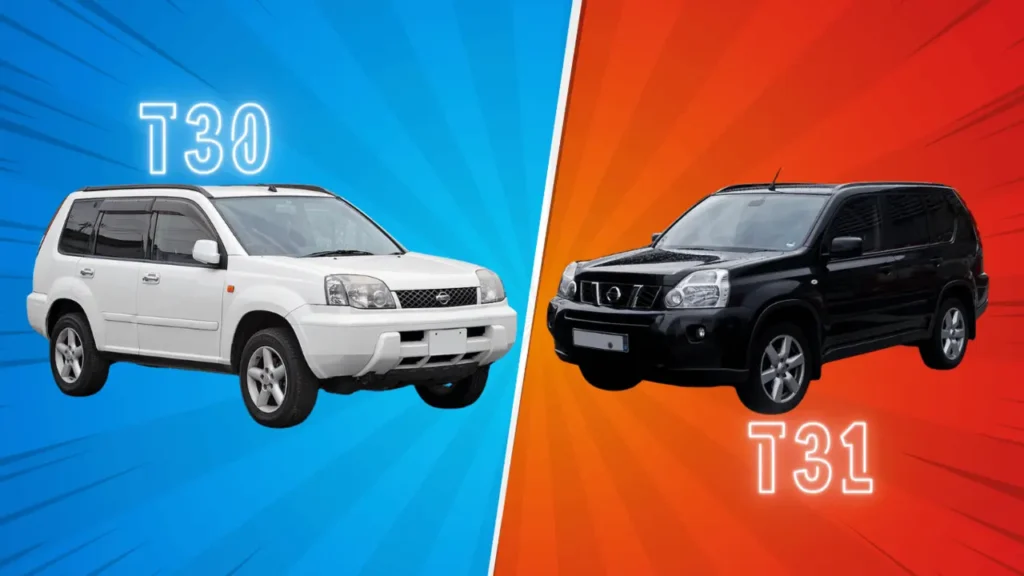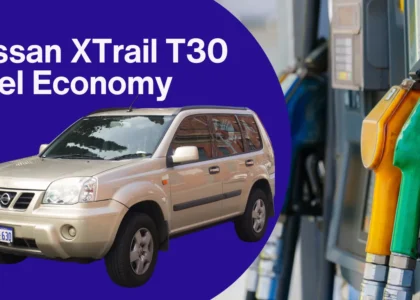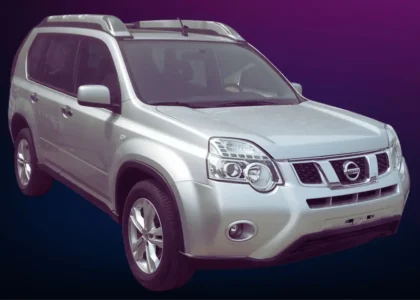Comparing the Nissan Xtrail T30 vs T31
Introduction to the Nissan Xtrail T30 and T31 models
The Nissan Xtrail has been a beloved compact crossover SUV, renowned for its versatility, practicality, and rugged capabilities. Over the years, Nissan has introduced two distinct generations of the Xtrail, the T30 and the T31, each offering its own unique blend of features and enhancements. In this comprehensive guide, we delve into the key differences between these two models, equipping discerning buyers with the knowledge they need to make an informed decision.
The T30 Xtrail, introduced in 2000, marked Nissan’s foray into the burgeoning crossover market. This model quickly gained popularity for its blend of car-like handling and SUV-inspired utility. On the other hand, the T31 Xtrail, launched in 2007, represented a significant leap forward in terms of design, technology, and overall refinement, catering to the evolving tastes and demands of modern consumers.
As you embark on your journey to find the perfect Xtrail, this article will serve as your trusted companion, unveiling the nuances that set these two generations apart. From exterior styling to interior amenities, engine performance to safety features, we’ll leave no stone unturned, empowering you to make a choice that aligns with your unique preferences and lifestyle.
Exterior design and styling differences
The Nissan Xtrail T30 and T31 models exhibit distinct exterior design philosophies, reflecting the evolving trends and tastes of their respective eras.
The T30 Xtrail embraced a rugged and utilitarian aesthetic, with its boxy silhouette and angular lines exuding a sense of adventure and capability. Its muscular fenders and prominent wheel arches hinted at its off-road prowess, while the upright stance and elevated ride height contributed to its commanding presence on the road.
In contrast, the T31 Xtrail adopted a sleeker and more contemporary design language. Its flowing lines and sculpted surfaces conveyed a sense of aerodynamic efficiency and modernity. The front fascia featured a bold and distinctive grille, complemented by swept-back headlights that lent the vehicle a more aggressive and sporty demeanor.
While the T30 Xtrail’s design prioritized functionality over form, the T31 model struck a harmonious balance between the two, appealing to buyers seeking both practicality and visual appeal.
Interior features and upgrades
The interior of the Nissan Xtrail underwent significant enhancements from the T30 to the T31 generation, reflecting Nissan’s commitment to elevating the driving experience and accommodating the evolving needs of modern families.
In the T30 Xtrail, the interior exuded a utilitarian charm, with a focus on practicality and durability. The cabin featured ample storage spaces and versatile seating configurations, making it an ideal companion for adventurous lifestyles. However, the materials and finishes were more functional than luxurious, catering to a more rugged demographic.
The T31 Xtrail, on the other hand, showcased a significant leap in interior refinement and amenities. Nissan introduced higher-quality materials, including soft-touch surfaces and premium upholstery options, elevating the overall ambiance and creating a more upscale cabin environment.
Notable upgrades in the T31 Xtrail included:
- Advanced infotainment systems with larger touchscreens and connectivity features
- Dual-zone automatic climate control for enhanced cabin comfort
- Heated and ventilated front seats for added luxury
- Panoramic sunroof for an open-air driving experience
- Increased legroom and headroom for improved passenger comfort
These enhancements not only catered to the evolving tastes of buyers but also reflected Nissan’s commitment to delivering a more refined and comfortable driving experience.
Engine performance and specifications
Under the hood, the Nissan Xtrail T30 and T31 models offered distinct powertrain options, tailored to meet the varying performance and efficiency demands of their respective eras.
The T30 Xtrail was initially offered with a 2.0-liter naturally aspirated four-cylinder engine, producing respectable power and torque figures for its time. Later models introduced a more potent 2.5-liter four-cylinder option, delivering increased performance and towing capabilities.
In contrast, the T31 Xtrail ushered in a new era of powertrain technology, with Nissan introducing more advanced and efficient engine options. The base model featured a 2.5-liter four-cylinder engine, while higher trim levels offered a powerful 2.5-liter turbocharged unit, delivering a significant boost in performance while maintaining respectable fuel efficiency.
Transmission choices also evolved between the two generations. The T30 Xtrail offered both manual and automatic transmission options, while the T31 model primarily focused on advanced continuously variable transmissions (CVTs) and sporty paddle shifters for a more engaging driving experience.
Safety features and technology
As safety became an increasingly paramount concern for consumers, Nissan made significant strides in enhancing the safety features and technologies offered in the Xtrail lineup.
The T30 Xtrail was equipped with standard safety features such as anti-lock brakes, electronic stability control, and front and side airbags. However, advanced driver-assistance technologies were limited during its production run.
In contrast, the T31 Xtrail embraced the latest safety innovations of its time. This model introduced a suite of advanced driver-assistance systems (ADAS), including:
- Blind-spot monitoring
- Rear cross-traffic alert
- Lane departure warning
- Forward collision warning with automatic emergency braking
- Adaptive cruise control
These cutting-edge technologies not only enhanced the overall safety of the vehicle but also provided drivers with an added layer of confidence and peace of mind on the road.
Handling and driving experience
While both the T30 and T31 Xtrail models were designed with versatility and practicality in mind, their handling and driving experiences differed significantly.
The T30 Xtrail’s rugged underpinnings and elevated ride height contributed to a more truck-like driving experience. Its suspension setup prioritized off-road capabilities and load-carrying capacity over outright handling prowess. However, this did not detract from its overall competence on paved surfaces, as the T30 Xtrail still delivered a comfortable and composed ride.
The T31 Xtrail, on the other hand, underwent a transformation in its chassis and suspension tuning, resulting in a more car-like driving experience. Nissan engineered the T31 model with a lower center of gravity and a more refined suspension setup, enhancing its on-road handling and responsiveness.
Additionally, the T31 Xtrail introduced advanced technologies such as active ride control and intelligent trace control, further improving its stability and cornering capabilities. These enhancements catered to buyers seeking a more engaging and dynamic driving experience without sacrificing the practicality and versatility inherent to the Xtrail nameplate.
Fuel efficiency and mileage comparison
In an era where fuel efficiency has become a critical consideration for consumers, the Nissan Xtrail T30 and T31 models offered varying levels of performance in this regard.
The T30 Xtrail, with its older engine technologies and more rugged underpinnings, delivered respectable fuel economy figures for its time. However, as automotive engineering advanced, the T31 Xtrail introduced more efficient powertrain options and aerodynamic enhancements, resulting in improved fuel efficiency and lower emissions.
Specific fuel economy figures varied based on engine choice, transmission, and driving conditions, but the T31 Xtrail generally outperformed its predecessor in terms of overall fuel efficiency, catering to the growing demand for eco-friendly and cost-effective transportation solutions.
Pricing and affordability
When it comes to pricing and affordability, the Nissan Xtrail T30 and T31 models catered to different segments of the market, reflecting their respective positions in the product lifecycle.
The T30 Xtrail, being an older model, offered a more affordable entry point into the Nissan crossover lineup. As it aged, its pricing became increasingly attractive, appealing to budget-conscious buyers seeking a capable and practical vehicle without breaking the bank.
In contrast, the T31 Xtrail represented the latest generation of the model during its production run, commanding a higher premium in the market. Its advanced features, improved safety technologies, and refined driving experience justified the increased pricing, attracting buyers willing to invest in the latest and greatest offerings from Nissan.
It’s important to note that pricing can vary significantly based on factors such as location, trim level, and overall condition of the vehicle, particularly in the used car market. Prospective buyers should carefully evaluate their budgetary constraints and prioritize their desired features and capabilities when considering either model.
Consumer reviews and ratings
To gain a comprehensive understanding of the Nissan Xtrail T30 and T31 models, it’s essential to consider the perspectives of real-world owners and industry experts. Consumer reviews and ratings offer invaluable insights into the strengths, weaknesses, and overall ownership experience of these vehicles.
The T30 Xtrail garnered praise for its rugged capabilities, spacious interior, and overall value proposition. Owners appreciated its versatility and ability to tackle various terrains and driving conditions with ease. However, some critiques included its dated interior materials and lack of advanced technology features compared to more modern competitors.
On the other hand, the T31 Xtrail received accolades for its refined driving dynamics, improved interior quality, and enhanced safety features. Reviewers commended Nissan’s efforts in modernizing the Xtrail while retaining its core values of practicality and versatility. Nonetheless, some critics cited the model’s relatively higher pricing and potential for higher maintenance costs as potential drawbacks.
Overall, both generations of the Nissan Xtrail garnered positive reviews and ratings from owners and experts alike, solidifying the model’s reputation as a capable and reliable choice in the compact crossover segment.
Nissan Xtrail T30 vs T31: Which model is right for you?
As you navigate the decision-making process between the Nissan Xtrail T30 and T31 models, it’s crucial to consider your specific needs, preferences, and lifestyle requirements.
If you prioritize affordability, rugged capabilities, and a no-frills approach to practicality, the T30 Xtrail may be the ideal choice for you. Its utilitarian design, spacious interior, and off-road prowess make it a reliable companion for adventurous lifestyles and outdoor pursuits.
However, if you seek a more refined and modern driving experience, coupled with advanced safety features and cutting-edge technologies, the T31 Xtrail is likely the better option. Its sleek design, improved interior quality, and enhanced handling characteristics cater to buyers seeking a balance between practicality and on-road performance.
Ultimately, the decision between the Nissan Xtrail T30 and T31 models boils down to your individual priorities, budget, and personal preferences. By carefully evaluating your needs and weighing the pros and cons of each model, you can make an informed choice that aligns with your unique lifestyle and driving aspirations.





